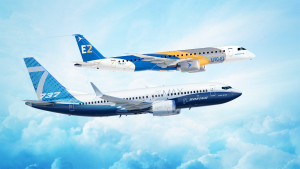In aviation, few technological advancements have been as transformative as the introduction and refinement of fly-by-wire (FBW) systems. Since their debut in military aircraft like the F-16 Fighting Falcon in the 1970s and their subsequent adoption in commercial aviation with the Airbus A320 in 1988, FBW systems have redefined how pilots interact with aircraft, how engineers design airframes, and how safety and efficiency are balanced in flight operations. Today, as we stand in 2025, the evolution of FBW continues to push the boundaries of what’s possible in aerospace engineering. This article explores the current state of FBW technology, its impact on modern aircraft design, and what the future holds for this cornerstone of aviation innovation.
A Brief Recap: What Makes Fly-by-Wire Unique?
At its core, fly-by-wire replaces traditional mechanical and hydraulic flight control systems with an electronic interface. Pilot inputs are transmitted via electrical signals to flight control computers, which then interpret and execute commands through actuators controlling the aircraft’s surfaces. This shift eliminates the need for heavy, complex mechanical linkages, offering significant weight savings and design flexibility.
The real game-changer lies in the integration of flight envelope protection. FBW systems, as implemented in Airbus aircraft, prevent pilots from exceeding critical aerodynamic limits—such as stall angles or maximum structural loads—by overriding inputs that could compromise safety. Boeing’s approach, seen in models like the 777 and 787, takes a slightly different tack, prioritizing pilot authority while still leveraging FBW for precision and efficiency. These philosophical differences continue to spark debate among engineers and pilots alike, but both approaches underscore FBW’s role in enhancing safety and performance.
The State of FBW in 2025
By February 2025, FBW has become ubiquitous across commercial, military, and even emerging urban air mobility (UAM) platforms. The latest Airbus A350 XWB and Boeing 787 Dreamliner iterations showcase how mature the technology has become. Enhanced redundancy—typically triple or quadruple backup systems—ensures reliability, while advanced software algorithms optimize fuel burn and reduce pilot workload during complex maneuvers.
One notable advancement is the integration of artificial intelligence (AI) into FBW systems. AI-driven flight control computers can now predict and adapt to turbulence, icing conditions, or engine performance anomalies in real time, adjusting control laws dynamically. For instance, during a transatlantic flight encountering unexpected clear-air turbulence, an AI-enhanced FBW system might preemptively adjust aileron and elevator inputs to minimize passenger discomfort and structural stress—all without pilot intervention. This capability, once speculative, is now being tested in next-generation prototypes by companies like Lockheed Martin and Dassault Aviation.
Military aviation has pushed FBW even further. The F-35 Lightning II, with its sensor-fused FBW architecture, exemplifies how these systems can integrate with autonomous flight modes. The aircraft’s ability to transition seamlessly between pilot control and pre-programmed maneuvers highlights a trend that’s beginning to trickle into commercial applications: semi-autonomous flight regimes that could one day support single-pilot or even pilotless operations.
Design Implications: Lighter, Bolder Airframes
For aerospace engineers, FBW’s greatest gift is design freedom. Without the constraints of mechanical control runs, airframes can be optimized for aerodynamics and efficiency rather than accommodating pulleys and cables. The Boeing 787’s sleek composite wings, for example, owe their shape partly to FBW, which allows precise control over inherently unstable configurations that maximize lift-to-drag ratios.
This flexibility is even more pronounced in emerging electric vertical takeoff and landing (eVTOL) aircraft. Companies like Joby Aviation and Lilium leverage FBW to manage multiple distributed electric motors, enabling configurations—like tilting wings or vectored thrust—that would be unfeasible with traditional controls. For aviation experts, this signals a paradigm shift: FBW isn’t just an upgrade to existing designs; it’s a foundational enabler of entirely new aircraft categories.
Challenges and Criticisms
Despite its advantages, FBW isn’t without challenges. Cybersecurity remains a pressing concern as aircraft become more connected. A hacked FBW system could theoretically override pilot inputs or disable critical redundancies—a risk that’s prompted regulators like the FAA and EASA to mandate stringent software certification standards. Additionally, the reliance on complex electronics raises questions about maintenance and repair in austere environments, a particular issue for military operators.
Pilot training also remains a point of contention. While FBW reduces workload, it can distance pilots from the tactile feedback of traditional controls, potentially dulling their situational awareness. The 2009 Air France Flight 447 tragedy, though not solely an FBW issue, underscored the risks of over-reliance on automation when pilots misinterpret or mismanage system behavior. Modern training programs are adapting, emphasizing “hand-flying” skills alongside FBW proficiency, but the balance remains delicate.
The Future: Autonomy and Beyond
Looking ahead, FBW is poised to underpin the next frontier: fully autonomous flight. Cargo drones and regional air taxis are already testing FBW-driven autonomous systems, with companies like Reliable Robotics and Wisk Aero leading the charge. By 2030, we could see certified passenger aircraft operating with minimal human oversight, relying on FBW to execute everything from takeoff to landing.
Another exciting prospect is adaptive control laws. Future FBW systems might reconfigure themselves mid-flight to compensate for battle damage (in military contexts) or mechanical failures (in commercial ones). Imagine a scenario where an airliner loses an engine and part of a wing: an adaptive FBW system could recalibrate control inputs to maintain stability, potentially turning a catastrophic failure into a manageable emergency.
Conclusion
Fly-by-wire is more than a technological milestone—it’s a lens through which we can view the industry’s past, present, and future. From its origins as a radical experiment to its current role as a linchpin of modern aerospace, FBW has proven its worth in safety, efficiency, and innovation. As AI, autonomy, and novel airframe designs converge, FBW will remain at the heart of aviation’s evolution, challenging engineers, pilots, and regulators to adapt to an increasingly dynamic sky. The question isn’t whether FBW will shape the future—it’s how far that future will soar.



